https://www.youtube.com/watch?v=fnwQDvtJ5zw
How to Make the Crispiest, Juiciest Chicken with Mandy Lee _ At Home With Us
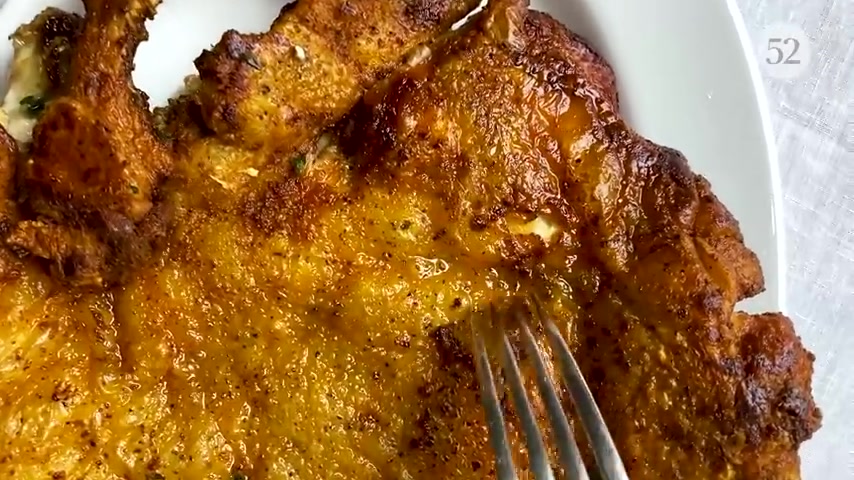
That is the level of crispiness , my friend and trust me , you can't get this from roast Chicken .
Hi .
Um Mandy again from Lady and Puffs .
Um , today I'm with food 52 to bring you probably one of my favorite chicken dishes to make .
And I call it flattening the bird .
Typically , what the favorite thing that people like to do to a chicken is to season it and then as a whole just stick it in the oven .
And then , you know , it's called the roast chicken .
And but in my mind , the pro the issue with roast chicken is what exactly are you after ?
So number one thing , crispy skin , number two juicy meat , none of those things can be easily achieved in roast chicken recipes because as you can see , a chicken is a very three dimensional object .
Ok .
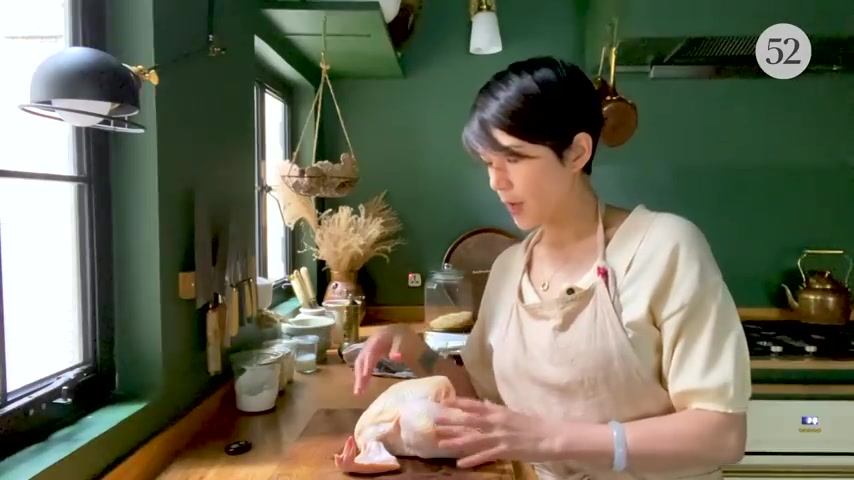
So when you stick it in the oven , it's very , very , it has all these nooks and crannies of these corners and folds .
It's very hard for the oven to distribute even um heat all around the chicken .
Typically you get like a kind of a overly brown breast skin and then , whereas like the skin on the bottom is still kind of a soggy and still , still wet .
What I'm proposing is we basically , what we're gonna do is turn this three dimensional object into a two dimensional sheet .
OK .
So you're gonna turn this chicken into a sheet and then it's going to cook slowly instead of it in an oven on the skillet .
And you're gonna be blown away by how much more amazing the result is compared to a roast chicken .
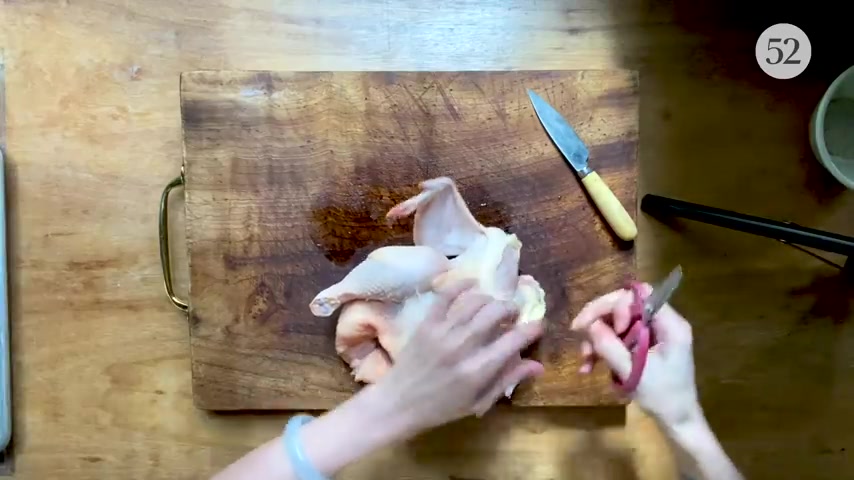
The first thing I usually do to a chicken is I take off the um wish bone and there you go .
Very easy .
OK ?
So the wish bone is gone .
OK ?
So now what I do is I will remove the wind tip and then press it up .
I'm going to use my scissor first to basically cut through the skin , split this breast open and you see that if I hadn't removed a wishbone , I'm going to run into it right now and it just annoys the hell out of me every single time .
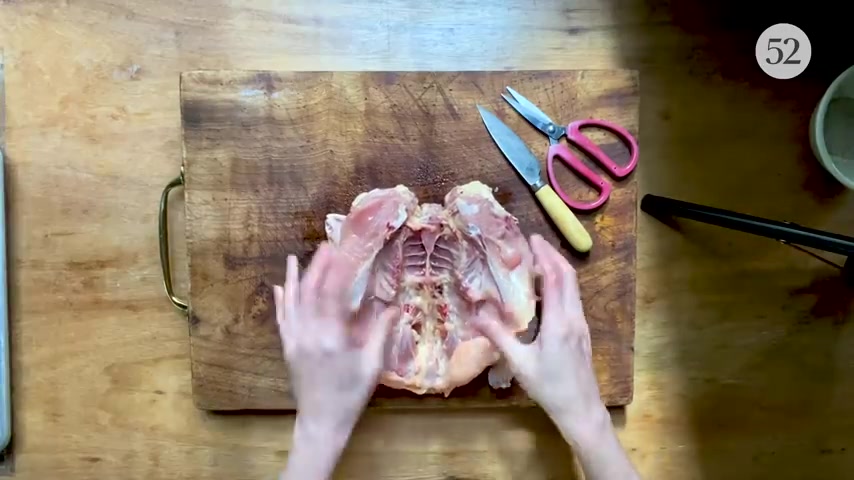
You can see like the chicken doesn't want to open yet because the bone is still kind of holding it into shape .
So what we're gonna do now is we're gonna bend this leg until you hear a crack .
You're basically trying to disconnect the side bone with the backbone here .
OK ?
Now , see much flatter .
OK ?
But we're gonna go even further than that .
OK ?
So the goal here is to basically disconnect every joint in this bird so that it , it , it has no nothing to hold itself in shape anymore .
So number one thing we're gonna do and it really , you don't have to follow the sequence here , you know , like you can do it however you see fit .
But you know , typically what I like to do is um I go for the wing here where it joins with the breast .
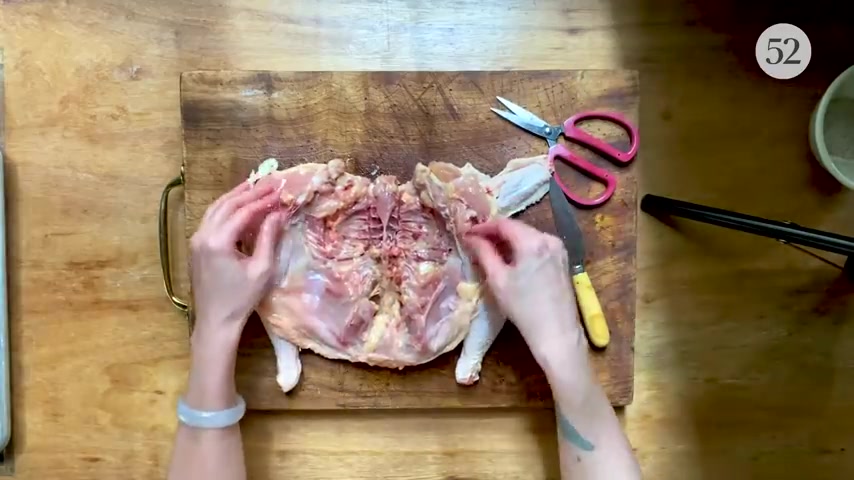
You can see that step by step .
It's getting much and much flatter as we go .
OK ?
But now you can see that the , the leg here is still a 3d object .
So it's still like folding it like this and this part of the skin is not gonna be in contact with the skillet .
So what we're gonna do is like I said , we're gonna dismantle every joint that's holding the bird together .
So I'm gonna feel where the drumstick bone is connecting to the thigh bone , which is right here .
And then I'm gonna give it a score and that will sever it very easily .
OK ?
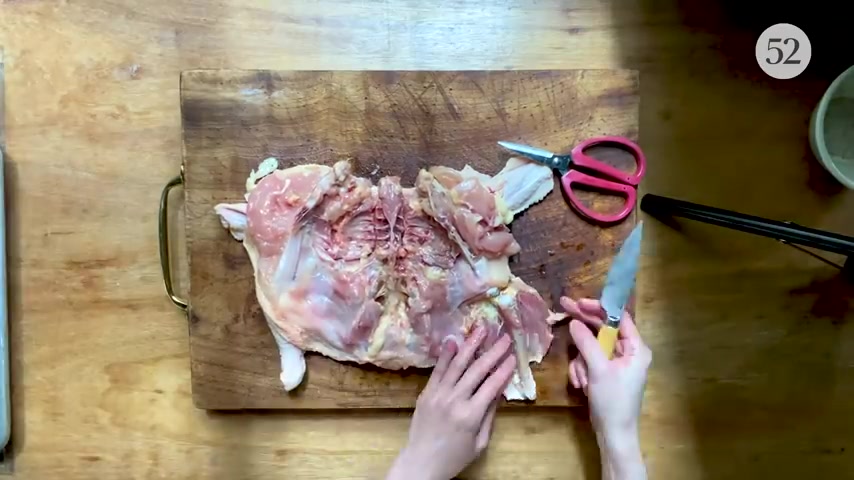
And now I'm going to open this drumstick up , try to give it a very clean score right against the bone where the meat and the bone touches instead of like slashing everywhere because you want the meat still , you , you still want the meat to be intact , right ?
So now you can see how this part is completely flattened up , right ?
It completely flattened .
OK .
So I'm just gonna do the same thing here .
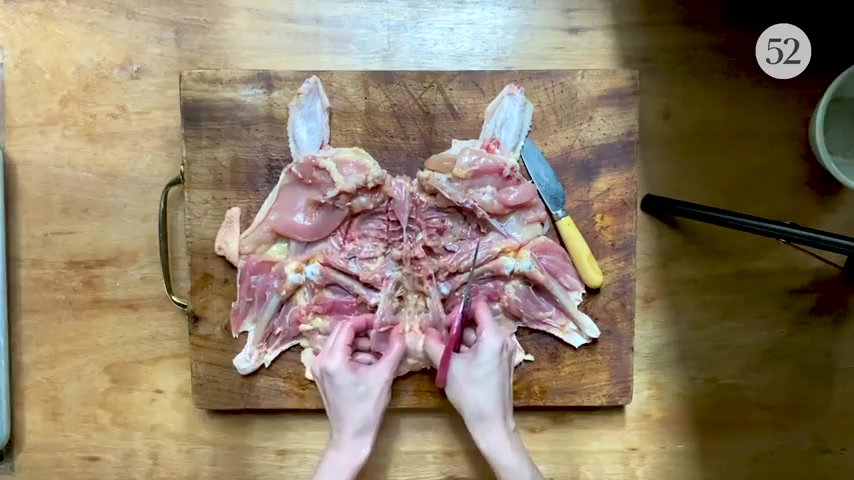
So now it's a super sloppy flatten bird .
OK ?
It's not that hard .
And then there's a p usually , typically I don't , you don't have to do this , but I like to remove this pelvic bone here .
You can see the skin side is gonna be where it touches the skillet , right ?
So you want every inch of skin to be able to completely beaten um in contact with the skillet .
So now you can see that I'm noticing that because like this part here is laying on top of the wing and is not going to be able to fully touch the skillet .
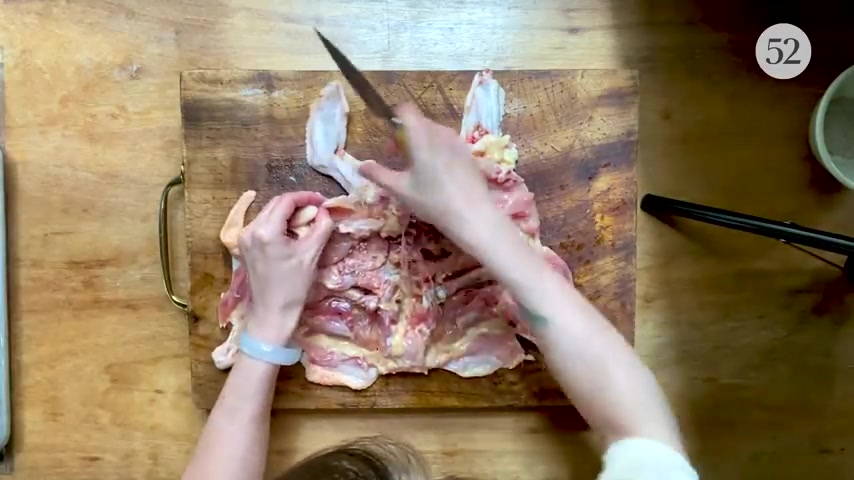
So here I'm going to release that and then there this part used to be over the wing , so it , it cannot touch a skillet , but now just give it a score and you , you just basically release it from , from that attachment and now it's completely flat .
There you go .
OK ?
Now it's completely and utterly flat and you can see it doesn't really take up a lot of time at all .
I promise you that once you've done this once or twice , you'll get the hang of it and it's gonna be so much easier .
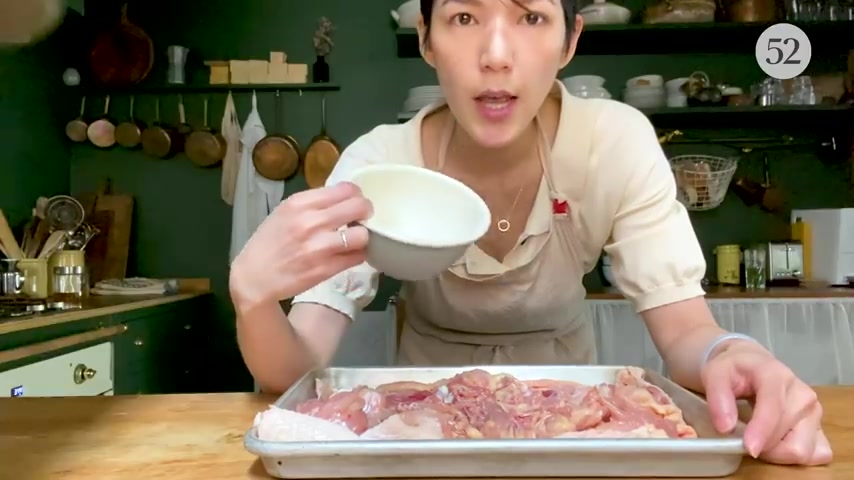
Um And unintimidating , put a meat side up first on a flat skillet like this because we're gonna season the meat side first .
And here I have 2.5 teaspoons of uh sea salt and one teaspoon of white pepper .
If you only have black pepper that's fine too .
But I like white pepper .
Um Actually I will urge you to urge you to try white pepper .
I just think it pairs um much better with chicken .
So Sprinkle half of that on the meat side .
Try to be as , even as you possibly can .
We don't want , what we don't want is like a mouth full of salt when you eat it .
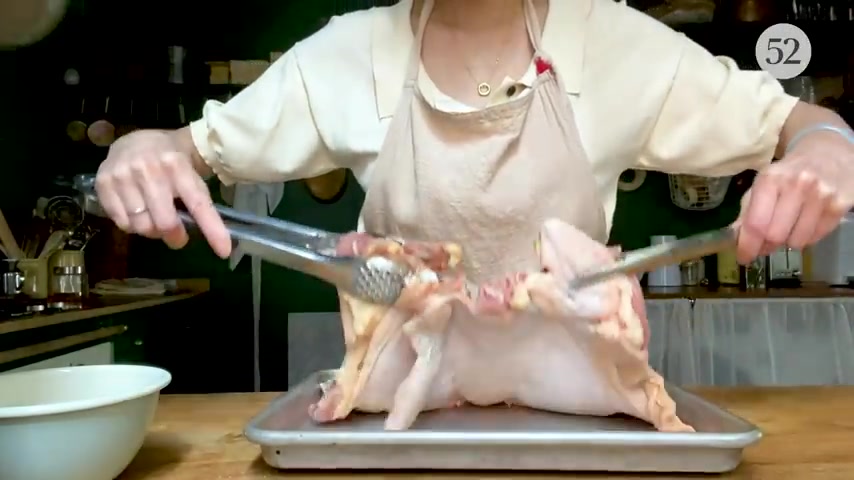
So there , so I put half of the seasoning on the meat side and now I'm gonna flip it and I'm going to season the skin side .
You know , there are a lot of folds here .
So try to lay it as flat and spread out as you possibly can .
My , my sheet is a little bit small , smaller .
Um , so ideally you want to use a sheet where the chicken can completely spread out , but you know , it's , it's fine .
OK ?
And I'm gonna put the salt on the skin side as well .
Again , try to be as , even as possible .
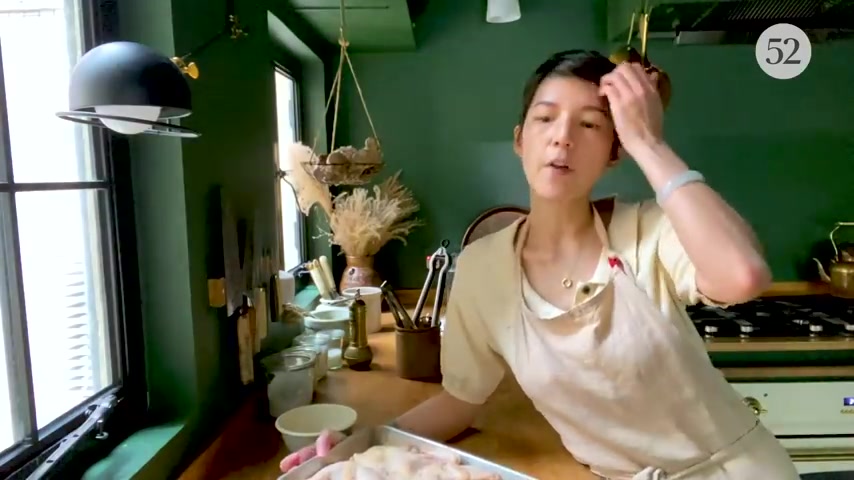
The next step I feel like is a very crucial step that , um , most people miss out .
Um , whether you're roasting chicken or doing it this way or not .
It doesn't matter .
Number one rule that you need to remember is dry skin equals crispy skin .
Because why ?
Because moisture is the enemy of crispiness .
We all know that .
Um So a lot of recipes don't either , they don't know that or they fail to mention it is that you always want to dry the skin up before you cook them because that is going to significantly increase the crispiness of the skin .
So , what I like to do is I like to leave the chicken in the ski uh pan like this uncovered and then I will stick um the chicken in the fridge for , I'm gonna say ideally two hours at least , ok , two hours up to like six hours .
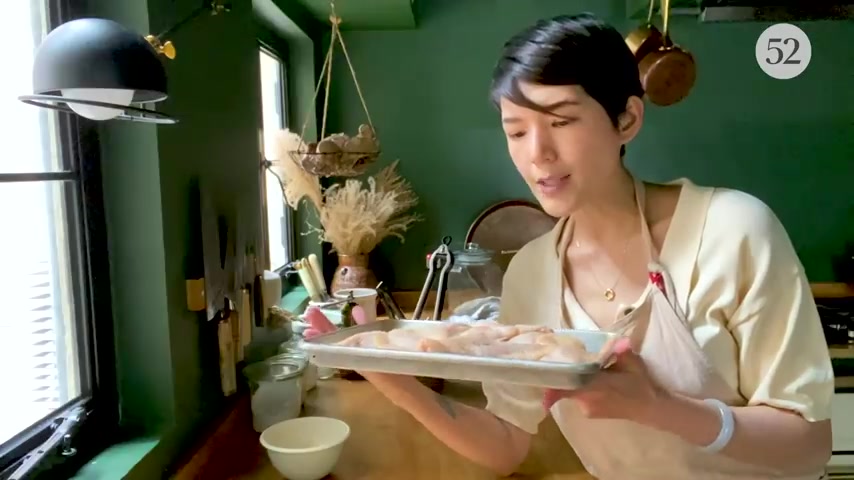
But if you don't have time , try to at least give it one hour in the fridge because the fridge is going to draw out all the moisture from the chicken skin and it's going to really , really , really help you , trust me achieve that crackling like chicken skin that we're all after , right ?
So put in the fridge , it's gonna be super dry and you're gonna be amazed .
So the chicken had been drying in the fridge for about two hours and when you take it out , um , you're gonna notice that the salt on the skin is gonna draw out the moisture from the chicken and if you haven't , um , left it in the fridge for long enough , those moisture um , are going to be still on the skin .
So just take a paper towel and just really thoroughly , um , let it dry .
Ok ?
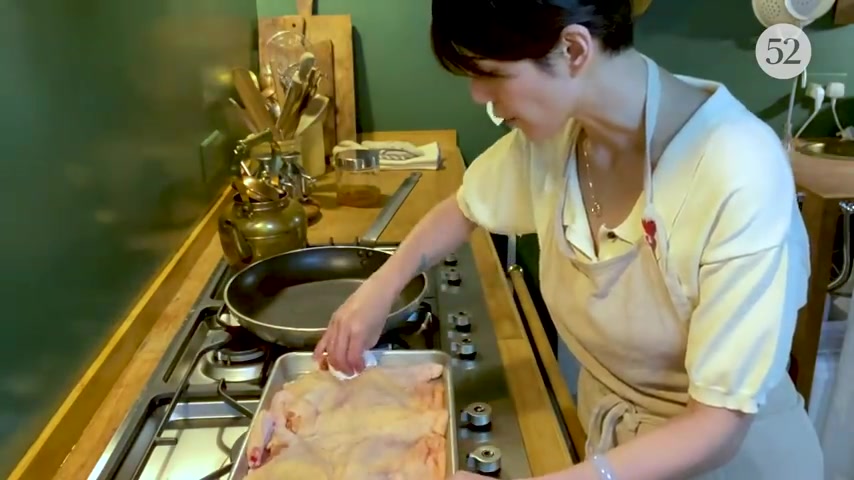
If you have left your chicken in the , in the fridge for six hours or so , um , it will come out really dry .
Those excess moisture , um , would have , would have evaporated already .
But um , typically two hours , um , you will still see a little bit of moisture just hanging around on the skin .
So just use a pepper towel .
Want it really , really , really dry ?
OK .
Boom , dry .
So once you've done that , you're gonna need a really big nonstick skillet .
Nonstick .
OK .
I can't stress this enough .
I mean , I've had people ask me like , oh , can I use my grandma's cast iron or , you know , blah , blah , blah ?
Ok .
You can use anything as long as it doesn't stick , not even a little bit .
Ok .
So my skillet is about a 30 centimeter in diameter .
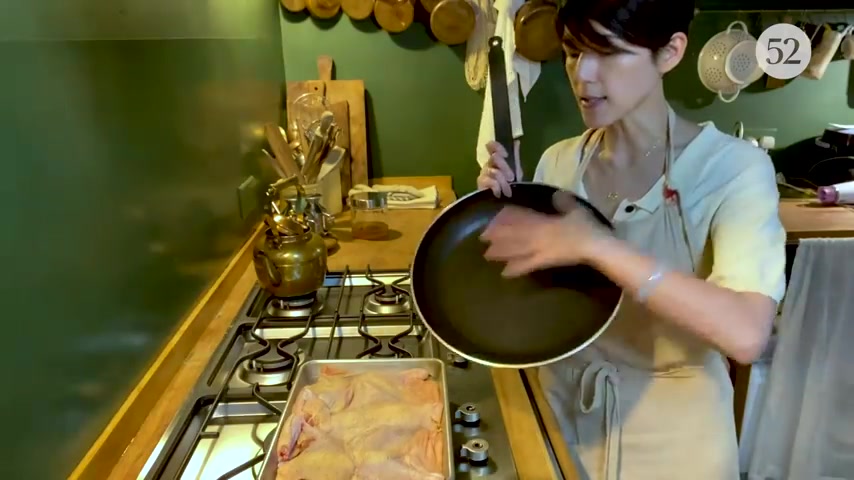
So you want a skillet ?
This is the minimal um the smallest size of a skillet that you can go .
Ok ?
Because any smaller the chicken is not gonna have room to spread out .
Then what is the point ?
Right ?
What we're gonna do is cold skillet .
Start with cold , cold , cold skillet .
We're going to transfer the chicken want you to skill it skin side down and then you're gonna take a little bit of time to really make sure the chicken is laying flat and spread out .
You don't want any fault of the skin that's being tucked underneath , you know , stretch it out as , as flat as possible .
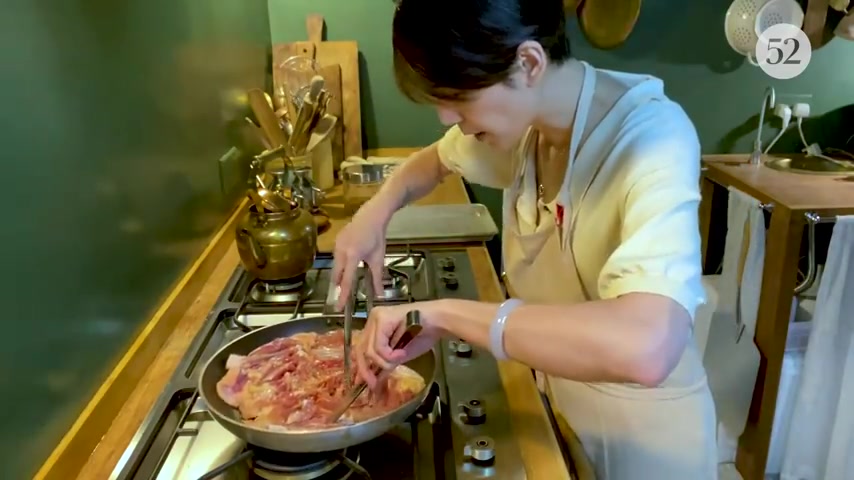
I'm using the tongs because I don't want to wash my hands again .
But you can use your hand if you only have a one ring burner , aim for medium low heat .
Ok ?
But um it's ideal that you use um , a two ring burner because the heat is more easy .
And then you're going to put um , a lid that is only half covering it partially .
Ok .
You don't want the lid to completely cover the skillet because why the steam is going to collect in the skillet ?
And what is , um , what is moisture the enemy of a crispiness ?
Right .
So , we don't want any moisture to be collected inside the skillet .
This is purely for preventing splatters .
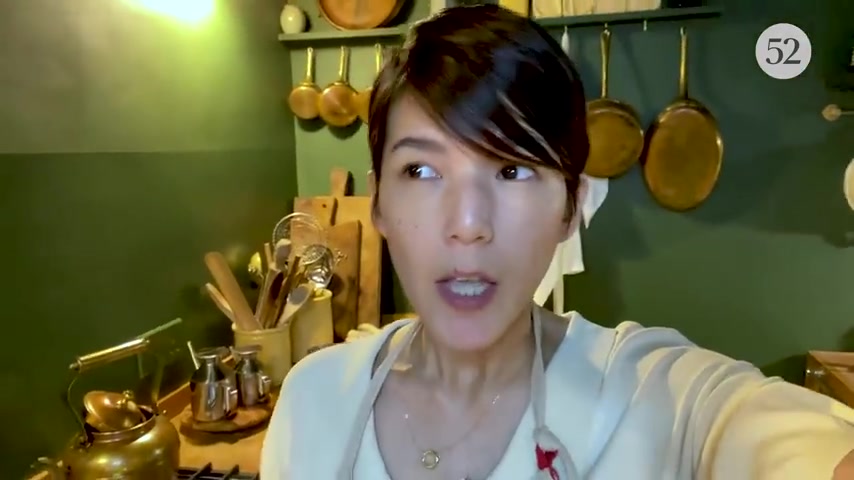
Let's talk a little bit about why cold skillet , but with the cold skillet , they're kind of slowly raising the heat so that all the moisture can be drawn out before the browning starts .
Ok .
Does that make sense ?
So it's been about like 78 minutes and you can see that a lot , a lot of chicken fat has been rendered out from the skin and that's exactly what you want and see , you want to see the explosion right there .
That's why you want the partial lid to um well protect yourself and also the kitchen .
So sometimes what I do is if my skillet , it's not super big that the bird is completely spread out .
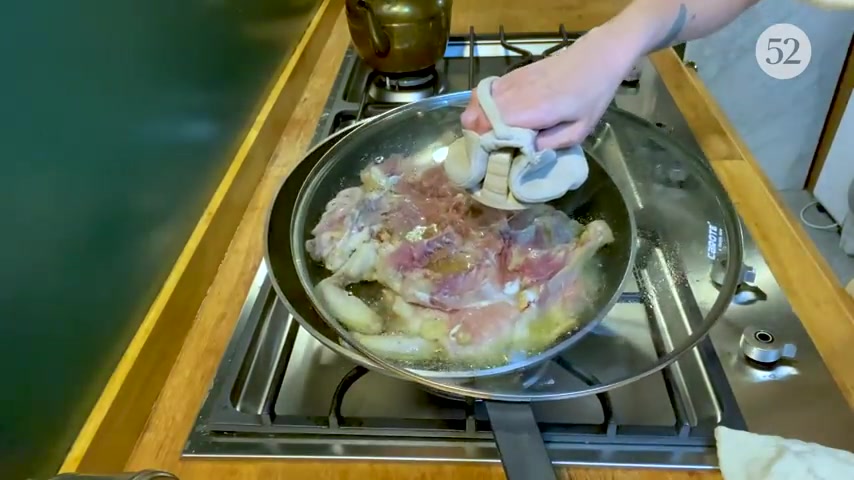
Um I like to tilt the skillet just like this so that it can cover all the parts that is not , that are not touching the bottom , you can feel it and then you would have had um enough chicken fat in the skillet to do that you're kind of now really frying the chicken in its own fat .
And meanwhile I've prepared , um , four cups of crushed garlic and a good small handful of fresh thyme , um , in my water , you can use any herbs you like .
But really garlic and thyme is just , it can't go wrong with that .
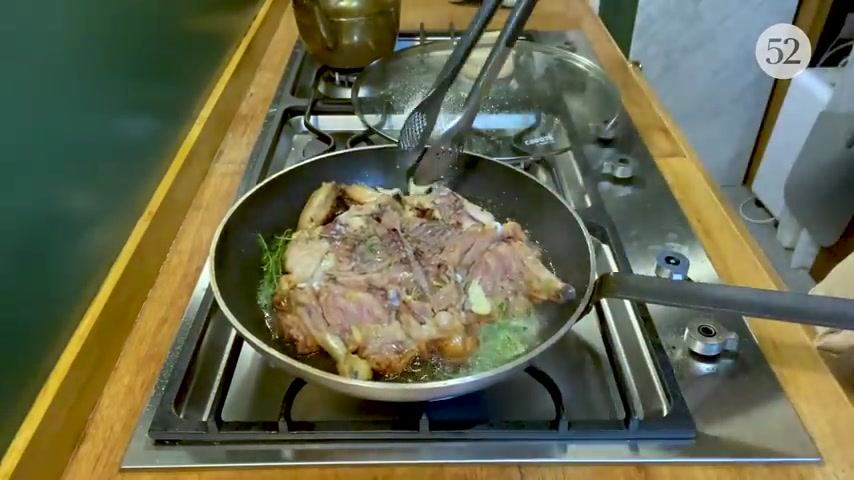
Now , it's about 30 minutes in and I'm ready to flip the bird and you can see this is when , um the last who did I ?
That's when I put in the garlic in the time and you want the time to pop like that .
Ok .
That's how it releases um , a fragment .
And then once the oil is season , I'm going to miss me .
Now , the beauty of this recipe is that when you're ready , once the skin is ready , the meat side has been slowly cooked to almost done this too .
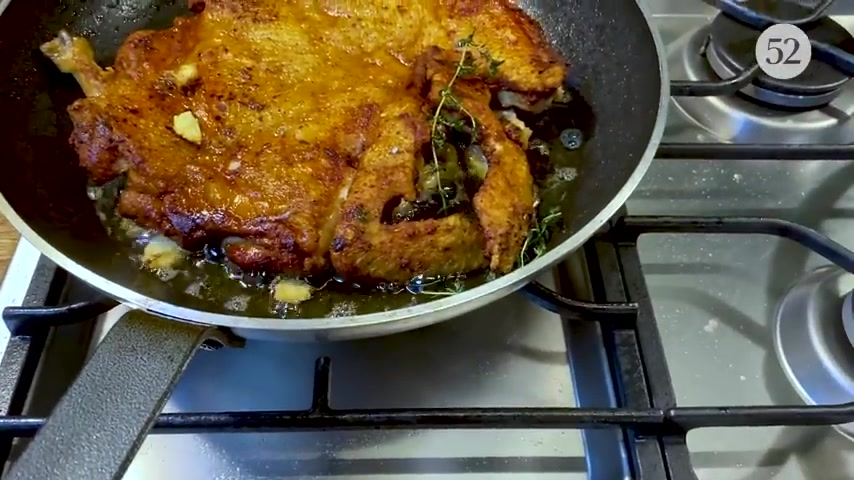
So when you , once you flip the bird , you really only just need two more minutes to um bring it to the finishing line .
And now I've turned off the heat already and please , please , please do not click the bird before the skin looks like this tunnel .
That is the level of crispiness , my friend that you want and trust me , you can't get this from roast chicken .
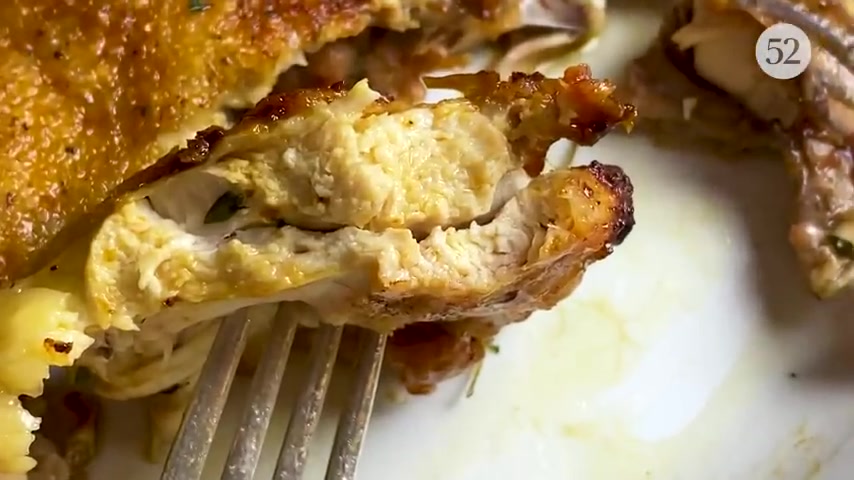
You see how the breast meat is still really , really moist compared to , well , the roast chicken is more like cardboard , kind of like powdery texture and still really , really tender and juicy I'm gonna start with the , because that's my favorite part .
Seriously .
I don't know if you can hear that .
No roast chicken will sound like that .
I , I promise you .
Hm .
Salty super concentrated chicken .
It's almost like the chicken is fried , which is kind of actually is kind of fried in , in its own fat .
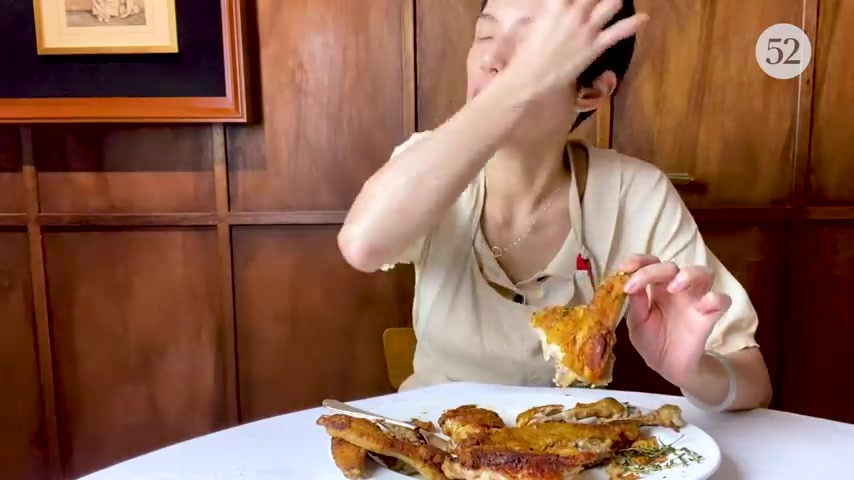
But when you get a skin , when you get the chicken skin , the skin to crisp up , excuse me , don't talk with my mouth full .
When you get the chicken skin to crisp up .
To this extent , the intensity is incomparable to skin that is still semi moist , semi soft .
Um , not completely , fully dried up .
It just tastes completely .
It's not even the same animal .
So there , um , this is my favorite chicken recipe and I can't tell you without you trying it .
I can't , I just can't tell you how much better it is than just the typical roast chicken .
And once you try it , um , once or twice you're gonna realize it's really , really not that hard .
It's quite easy to do .
And the cooking process is , um , quite a cinch and , yeah , so I hope you like it and give it a try .

Let me know what you think and I hope to see you next time .
Are you looking for a way to reach a wider audience and get more views on your videos?
Our innovative video to text transcribing service can help you do just that.
We provide accurate transcriptions of your videos along with visual content that will help you attract new viewers and keep them engaged. Plus, our data analytics and ad campaign tools can help you monetize your content and maximize your revenue.
Let's partner up and take your video content to the next level!
Contact us today to learn more.